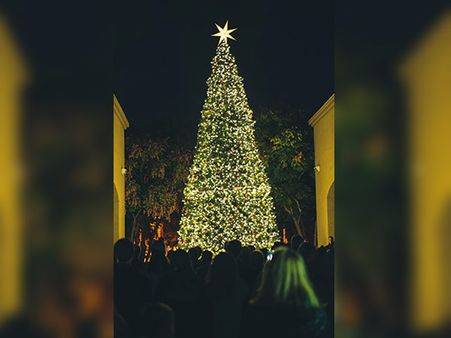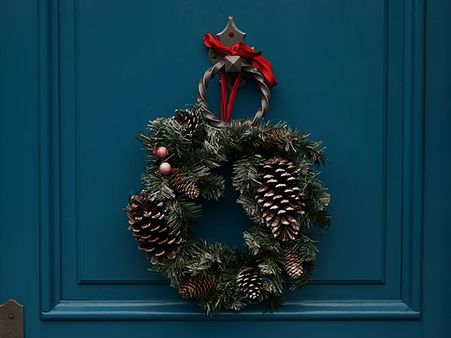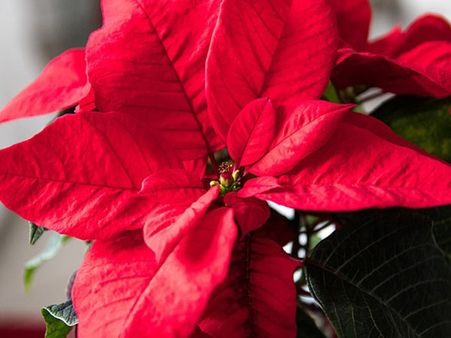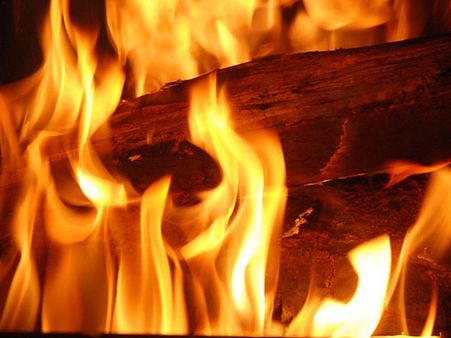Just In
- 2 min ago

- 30 min ago

- 3 hrs ago

- 7 hrs ago

Don't Miss
- Sports
 Hardik Pandya bystander as Akash Madhwal takes input from Rohit Sharma before bowling final over vs Punjab
Hardik Pandya bystander as Akash Madhwal takes input from Rohit Sharma before bowling final over vs Punjab - Technology
 Google Maps Introduces Eco-Friendly Commuting Options: All You Need to Know!
Google Maps Introduces Eco-Friendly Commuting Options: All You Need to Know! - Movies
 Heeramandi Release: Sanjeeda Shaikh Offers Glimpse Of The Enigmatic Waheeda
Heeramandi Release: Sanjeeda Shaikh Offers Glimpse Of The Enigmatic Waheeda - Finance
 Inox Wind Secures Repeat 210 MW Order From Hero Future Energies
Inox Wind Secures Repeat 210 MW Order From Hero Future Energies - Automobiles
 Sany India Introduces SKT105E: An Electric Dump Truck
Sany India Introduces SKT105E: An Electric Dump Truck - News
 Bengaluru Park Tragedy: Mother Avenges Daughter's Killer After He Stabs Her To Death
Bengaluru Park Tragedy: Mother Avenges Daughter's Killer After He Stabs Her To Death - Education
 Jharkhand Board Class 10th result 2024 is OUT; Know steps to check the result
Jharkhand Board Class 10th result 2024 is OUT; Know steps to check the result - Travel
Telangana's Waterfall: A Serene Escape Into Nature's Marvels
Christmas 2020: Traditions Related To This Festival And Symbols Attached To It
Read here the symbolic significance of different items used during Christmas.

Christmas is the main festival of the Christian faith that is celebrated all over the world and brings joy, love, and peace. People give and receive gifts from others and also offer good tidings. Like every year, this year too on 25 December, it will be a day full of joy and celebration.
The tradition is only growing on a large scale among everyone, irrespective of religion. The festival is celebrated by all with great enthusiasm. Christianity, as a whole, is fully embedded with symbols that have been derived from the Holy Bible; and many of the symbols have become a part of Christmas too and are used as primary items which mark the holy day. Other than the Bible as a source, people have come to recognize these items as other symbols.

Now, are these symbols simply for the sake of showing the season in a bright manner in the darkness of winter? Definitely not. They have strong in-depth meanings in relation to the birth of Jesus Christ and his ways of life.
Using the items are a good way to spread the message of Christmas through their symbolic significance in the religion. There are around 25 symbols or even more in total, which include the star, tree, and others. Out of these, 15 important ones are discussed here.

1. The Christmas Tree
The Christmas tree is the one tree that thrives through the dead of winter. Moreover, it stays evergreen with just a cloud of snow over it. An evergreen tree stood for hope and life even before Christ's birth. People used to get inspired by it in those days.
In 700's St. Boniface, in Germany, demolished Oak of Thor, the tree which was worshipped by the Saxons. A fir tree grew from the roots of the Oak tree. He spread the message that it was a sign of Christian faith. That was the first instance of the connection between the Christmas tree and that of Christianity. In the 15th century, people started erecting trees at homes on Christmas Eve to celebrate the feast of Adam and Eve.
Martin Luther too decorated a snow-covered fir tree with candles inside his house. By the 18th century, the tradition became intact in France, Germany, and Austria; and from then on, it has spread and has become the first thing that comes to one's mind when told about Christmas.

2. Christmas Wreath
Wreaths are found mostly on the door of the entryway. Being circular in shape, they signify the never-ending love of God. Traditionally, wreaths are made of evergreen leaves and berries are used to decorate the green wreath. Though some might see it as a decor, in reality, the inspiration for a wreath came from the crown of thorns worn by Jesus during crucifixion. The red berries represent the blood of Jesus.

3. Candles And Lights
Candles are an intricate part of the Christian faith. They represent the ‘Light of the World' who is none other than Jesus Christ. Jesus came down to the earth to eradicate the darkness that spread due to the sins committed by man. He showed people the pathway to reach the Almighty by his ways of living and loving. At first, candles were used to decorate the Christmas trees. Later on, lights replaced the candles.

4. Christmas Star
Just like the Christmas tree, the star is an important and a popular item used during Christmas. One can see stars hanging in many places during the season - in the verandah of the houses, at churches, on the streets, on the Christmas trees, and almost everywhere. The symbolism comes from the story of the birth of Christ. A star had appeared in the sky when the Saviour was born. It shone nice and bright all through the night and it was unusual. It was this star, called the ‘Star of Bethlehem' that led the three wise men to Baby Jesus.

5. Bells
The Christmas bells announce the arrival of the holiday season. The ringing of the bells also helps to ward off negativity. As per the Christian tradition, the bells are used extensively during the Holy Mass services. It is to remind the people of the presence of Christ. With Christmas, it is a reminder of the arrival of Baby Jesus.

6. Nativity Scene
The nativity scene is nothing but the scene which depicts the night of the birth of Jesus Christ in a manger or a stable. The scene is shown as live demonstrations as a part of Christmas celebrations in many places even now. Otherwise, art, ceramics, or figurines are used to depict the scene. The nativity scene has become a part of Christmas symbols and is used as a decor too. Mary, Joseph, Baby Jesus, shepherds, three wise men, and barn animals are the main living beings found in the nativity scene.

7. Snowflakes
The arrival of Christmas is just four days after the winter season officially begins. It snows during this time of the year in the Northern Hemisphere and it is only obvious that snowflakes are associated with Christmas. Snowflake is such a beautiful creation by God for the kind of detailing it has in such minute measures. Though it cannot be seen by the naked eye, no one has failed to appreciate the beauty of the snowflake, brought out by science, which is usually found in the six-headed structure, almost like a star.

8. Stockings
Traditionally, Christmas gifts were placed in stockings. It was started off by St. Nicholas, the Bishop of Myra, who threw gold coins into stockings of three women, who had hung them near the fireplace to dry. It is said that they needed money for dowry and to keep away from prostitution. From then on, it is believed that gifts will be thrown in via the chimney into the stockings during Christmas. This is the reason why stockings are used as decoration for the mantel.

9. Candy Canes
This minty treat is everyone's favourite for the holiday season. One can only think of the candy cane in the red and white colour, which stands for the bloodshed of Jesus and purity, respectively. The shape of the treat signifies the stuff used by shepherds to lead the flock in the right direction. One must remember that Jesus himself was the Good Shepherd.

10. Holly
In some languages used in Scandinavia, the other word for Holly is ‘christ-thorn'. The striking factor of the holly is the evergreen thorny leaves and the red berries. The leaves represent the crown of thorns that Christ wore on his head during his death. The red berries stand for the blood shed by him for the good of the people. Holly is used as a decorationitem mostly for wreaths and Christmas trees.

11. Mistletoe
Mistletoe is a partly a parasitic evergreen plant that grows on other trees. It steals nutrients from the host tree to sustain during the winter season. The fact is that the plant will not survive without the host tree. The plant has the capacity to survive extreme drought conditions too, but only with the help of the tree. This shows how people must depend on the love and guidance of the light of the Lord to live our lives successfully.

12. Poinsettia
Poinsettia is a flower that can be found in two colours - red and white. The shape of the flower resembles a star denoting the Christmas star. The origin of the flower is Mexico and it has the strength to thrive in harsh winters. So, it is seen as a sign of new life. The colours, red and white, denote bloodshed and purity, respectively.

13. Yule Log
The roots of the Yule log lie in the Pagan traditions. The Pagans used to burn the log for 12 days remembering the 12 tribes of Israel and the 12 apostles. Yule stands for sun or light. The burning of the log, that stands for the death of the Christ, by Christians as part of Christmas celebrations is to spread light, the light of faith and for the sake of good health, fruitfulness, and prosperity. The log also represents the cross, on which Christ died.

14. Gingerbread Man
The Gingerbread man is baked or rather created in the colour of the earth. The symbolism goes back to the creation of Adam and Eve, whom God created from dust. The gingerbread man being eaten, reminds us that man is a mortal being and that he unites with the creator after his death.
However, apart from these items, the biggest inspiration is Santa himself. The act of presenting gifts during Christmas was started by St. Nicholas. He was the Bishop of Myra, which is now located in modern Turkey. He was a very generous person. The interesting fact is that he used to give away money and presents without revealing his true identity. He always wore fur-trimmed red winter garments. The outfit and the act of generosity got transferred over time to the form of Santa Claus, for whom the children wait every year to deliver gifts for Christmas.
-
 healthChristmas 2023: Healthy Christmas Feast To Enjoy Without Derailing Your Diet
healthChristmas 2023: Healthy Christmas Feast To Enjoy Without Derailing Your Diet -
 insyncMerry Christmas 2023: 20 Heartfelt Wishes, Greetings, Texts, Messages, FB and WhatsApp Status
insyncMerry Christmas 2023: 20 Heartfelt Wishes, Greetings, Texts, Messages, FB and WhatsApp Status -
 home n gardenChristmas 2023: A Guide to Festive and Budget-Friendly Christmas Decor
home n gardenChristmas 2023: A Guide to Festive and Budget-Friendly Christmas Decor -
 beautyFestive And Fab: 6 Radiant Christmas Party Makeup Looks Inspired From B-Town Beauties!
beautyFestive And Fab: 6 Radiant Christmas Party Makeup Looks Inspired From B-Town Beauties! -
 fashionChristmas 2023: Your Red Party Outfit Guide Straight From The Bollywood Closet
fashionChristmas 2023: Your Red Party Outfit Guide Straight From The Bollywood Closet -
 insyncViral Snow Globe Cocktail Recipe: Shake Up Your Holiday Celebrations With This Frosty Magic Drink!
insyncViral Snow Globe Cocktail Recipe: Shake Up Your Holiday Celebrations With This Frosty Magic Drink! -
 pregnancy parentingChristmas 2023: How To Raise Kids Who Are On Santa's Nice And Naughty List This Holiday Season
pregnancy parentingChristmas 2023: How To Raise Kids Who Are On Santa's Nice And Naughty List This Holiday Season -
 insync10 Unique And Weird Christmas Traditions Across The World That Will Make Your Jaw Drop
insync10 Unique And Weird Christmas Traditions Across The World That Will Make Your Jaw Drop -
 astrologyChristmas 2023: 4 Zodiac Signs Who Will Make Luck Work In Their Favour This Holiday Season
astrologyChristmas 2023: 4 Zodiac Signs Who Will Make Luck Work In Their Favour This Holiday Season -
 insyncChristmas 2023: 10 Irresistible Christmas Cake Baking Ideas, Recipe Videos Inside!
insyncChristmas 2023: 10 Irresistible Christmas Cake Baking Ideas, Recipe Videos Inside! -
 insyncChristmas 2023: Top 15 Budget-Friendly, Fun Gift Ideas For Kids That Will Keep Their Festive Spirit High
insyncChristmas 2023: Top 15 Budget-Friendly, Fun Gift Ideas For Kids That Will Keep Their Festive Spirit High -
 astrologyChristmas 2023: Best Gifts Ideas For Your Family And Friends According To Their Zodiac Sign
astrologyChristmas 2023: Best Gifts Ideas For Your Family And Friends According To Their Zodiac Sign


 Click it and Unblock the Notifications
Click it and Unblock the Notifications



